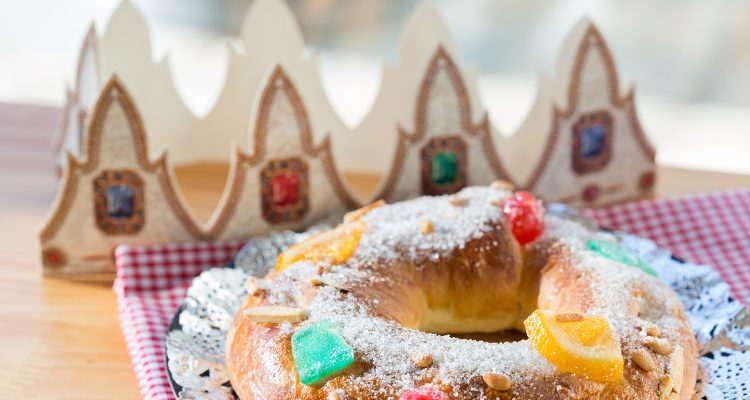
King cake is a traditional Epiphany dessert, which is also happens to be a part of Mardi Gras celebrations. It is a cross between a coffee cake and a French pastry. Its history is as rich as its flavor. King cake is usually eaten on Twelfth Night after Christmas—also known as Epiphany in the Christian calendar. However, they are a common sight throughout carnival season, until Mardi Gras or Fat Tuesday.
History of King Cake or Mardi Gras Cake
In European countries, Epiphany is celebrated to mark the auspicious occasion when Jesus met the three wise kings in Bethlehem. This religious anniversary falls on January 6 every year (twelve days after Christmas). Hence, Epiphany is also synonymous with “Little Christmas.” It is an important festival in many Christian countries and is celebrated with grand feasting and the exchanging of gifts.
People of Christian faith celebrate the day with a popular custom of baking and eating “king cake”—a sweet, circular pastry, cake, or bread in honor of the three kings. A tiny plastic doll representing baby Jesus is stuffed inside the cake. Whoever finds the doll is said to enjoy good luck throughout the year. Traditionally, the victor must either buy the next king cake, or throw the next party.
The king cake tradition originated in Old World France and Spain. There are two types of king cake—the ring type and the “galette des rois.” The king cake tradition came to New Orleans from France in 1870. Being a specialty, king cake is available only during the Mardi Gras season.
Initially, it was a simple ring of dough with minimal decoration. But with time, the cake’s design evolved into a fancy ring cake with more colorful garnishes like cream cheese and fruit fillings and typically made with brioche dough. The dough is braided and laced with cinnamon and then glazed with purple, green, and gold sugar—or covered in icing in those same Mardi Gras colors.
The three Mardi Gras colors are purple, green, and gold. These three colors are associated with royalty, and each of them bears a royal virtue or quality. Purple stands for justice, green stands for faith, and gold stands for power.
Sources:
“History of King Cakes,” Mardigrasday.com web site; http://www.mardigrasday.com/king-cakes/history-of-king-cakes/, last accessed February 22, 2017
“Fresh King Cakes Directly from New Orleans,” Mardi Gras New Orleans web site; http://www.mardigrasneworleans.com/kingcakes.html, last accessed February 22, 2017
“History of King Cakes,” Manny Randazzo King Cake web site; https://www.randazzokingcake.com/pages/History-of-King-Cakes.html, last accessed February 22, 2017
Hatic, D., “ The King Cake Tradition, Explained,” Eater web site, January 11, 2017; http://www.eater.com/2017/1/11/14168802/king-cake-history, last accessed February 22, 2017
Greenspan, J., “9 Things You May Not Know About Mardi Gras,” History web site, February 12, 2013; http://www.history.com/news/9-things-you-may-not-know-about-mardi-gras, last accessed February 22, 2017
Walker, J., “New Orleans king cake history: 10 things to know,” Mardi Gras web site, February 16, 2012; http://www.mardigras.com/news/2012/02/history.html, last accessed February 22, 2017













